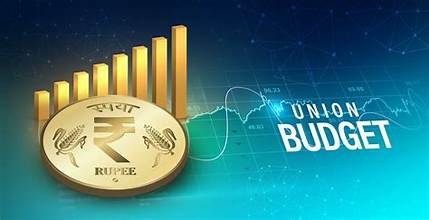In a momentous presentation on Thursday, Finance Minister Nirmala Sitharaman unveiled the Interim Union Budget 2024-25 in Parliament. Despite its nature as a vote-on-account, this budget did not hold back in delivering impactful revelations. Notably, both direct and indirect tax rates have remained steadfast, preserving the status quo. Let’s delve into the key highlights of this budget and decipher its implications for the fiscal year.
A Surge in Capital Expenditure
One of the pivotal announcements revolves around a remarkable 11.1% surge in the capital expenditure outlay for the upcoming year, reaching a staggering Rs 11,11,111 crore. This substantial increase equates to 3.4% of the GDP, signaling a robust financial commitment to developmental initiatives.
Continued Support for State Expenditure
The government plans to sustain the scheme of a 50-year interest-free loan for capital expenditure to states. This year’s allocation earmarks a total outlay of Rs 1.3 lakh crore, with a specific provision of Rs 75,000 crore as a 50-year interest-free loan. This financial injection aims to bolster Viksit Bharat’s milestone-linked reforms implemented by state governments.
Fiscal Consolidation on Track
Addressing the imperative of fiscal consolidation, Minister Sitharaman reiterated the commitment to reducing the fiscal deficit below 4.5% by 2025-26. The estimated fiscal deficit for 2024-25 stands at 5.1% of the GDP, aligning with the stipulated path of economic prudence.
Borrowings and Market Dynamics
Sitharaman disclosed that gross and net market borrowings through dated securities for 2024-25 are anticipated at Rs 14.13 and 11.75 lakh crore, respectively. Strikingly, both figures are projected to be lower than those recorded in the preceding fiscal year.
Targeted Welfare Approach
Prime Minister Narendra Modi’s vision emphasizes the well-being of four major segments – the ‘Garib’ (Poor), ‘Mahilayen’ (Women), ‘Yuva’ (Youth), and ‘Annadata’ (Farmer). Minister Sitharaman underscored that their welfare remains the government’s topmost priority.
Empowering India: The ‘Viksit Bharat’ Vision
With an eye on making India a ‘Viksit Bharat’ by 2047, Minister Sitharaman stressed the need to enhance people’s capabilities and empower them. The government is keen on fostering inclusive growth and ensuring that the benefits reach every stratum of society.
Regional Empowerment Initiatives
Focusing on regional development, the government aims to transform the eastern region into a potent driver of India’s growth. Initiatives like PM Awas Yojana (Grameen) are making significant strides, with a target of three crore houses. Additionally, the plan includes rooftop solarisation to provide up to 300 units of free electricity every month to one crore households.
Golden Era for Tech-savvy Youth
In a move set to define a golden era for the tech-savvy youth, a corpus of one lakh crore rupees will be established through a 50-year interest-free loan. This financial backing aims to propel technological advancements and innovation.
Infrastructural Thrust: Railways and Aviation
The budget outlines ambitious infrastructural plans for the railways, focusing on economic railway corridor programs, port connectivity corridors, and high-traffic density corridors. Simultaneously, the aviation sector witnesses a doubling of airports to 149, with 517 new routes catering to 1.3 crore passengers. Indian carriers have proactively placed orders for over 1,000 new aircraft.
Resolving Taxation Woes
The Interim Budget proposes the withdrawal of outstanding direct tax demands, benefitting taxpayers with dues up to Rs 25,000 for the period up to the financial year 2009-10 and up to Rs 10,000 for financial years 2010-11 to 2014-15.
Tax Landscape and GST Impact
Sitharaman acknowledged the commendable growth in direct tax collections, which have more than tripled over the last decade, accompanied by a significant increase in return filers. She highlighted the positive impact of GST, which has streamlined the indirect tax regime, reducing compliance burdens for trade and industry.
Economic Status White Paper
Reflecting on the state of the Indian economy, Minister Sitharaman mentioned the government’s successful efforts since 2014 to mend the economy and streamline governance systems, driven by a ‘nation-first’ ethos.
Sustaining Support for Start-ups
In a nod to the entrepreneurial spirit, the government announced tax benefits for start-ups and investments made by sovereign wealth or pension funds. The proposal aims to extend certain tax benefits, including tax exemption on specific income of IFSC units, until March 31, 2025.




